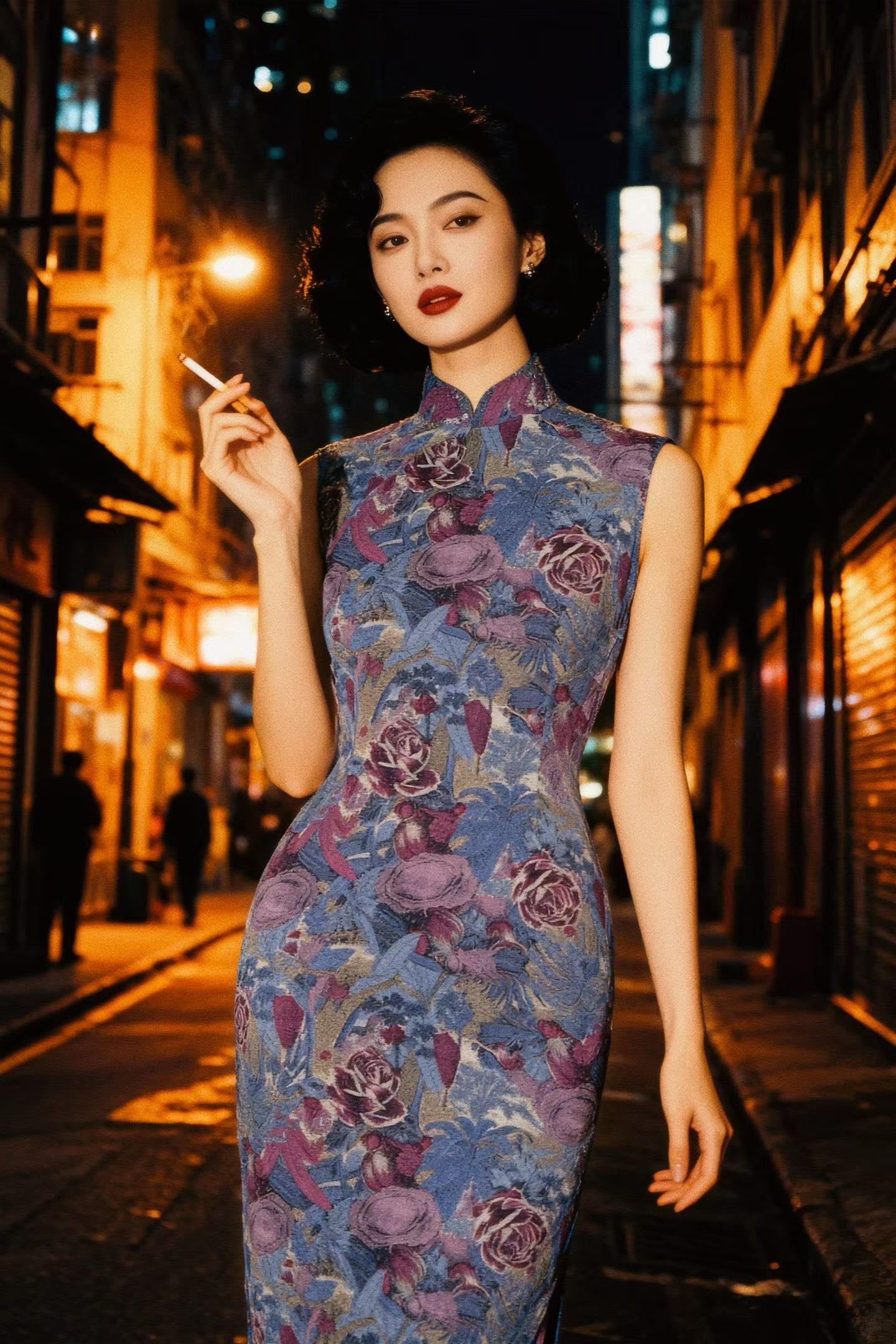深圳溯源
50年代 - 莫奈烟霭法国亚麻抽象香港产古董旗袍 / 1950s - Monet's Mist: A 1950s Hong Kong Vintage Qipao in Abstract Floral French Linen, Inspired by Impressionism
50年代 - 莫奈烟霭法国亚麻抽象香港产古董旗袍 / 1950s - Monet's Mist: A 1950s Hong Kong Vintage Qipao in Abstract Floral French Linen, Inspired by Impressionism
无法加载取货服务可用情况
分享一件上世纪五十年代莫奈烟霭法国亚麻抽象香港产古董旗袍。
蓝紫渐变的底色如烟霭笼罩的古典园林,粉紫玫瑰、绛色牡丹、
旗袍主体采用大繁至简的满地花卉纹,
选用法国进口亚麻为基底,其粗粝肌理与浮雕式印花工艺形成“
这种融合“中式意境、西方技法、材料创新”的风格,
"Monet's Mist": The Abstract Symphony of Flowers, A Wearable Canvas of the 1950s
We share a rare vintage Qipao, made in Hong Kong in the 1950s, featuring an abstract floral print on French linen, reminiscent of Monet's hazy masterpieces. This garment serves as a magnificent testament to a style that embraced both the soul of Oriental charm and the spirit of Western modern art.
The background, a gradient of blue and purple, resembles a classical garden shrouded in an atmospheric mist. Across this canvas, pink roses, crimson peonies, and moon-white lotus flowers are freely scattered in abstract lines. The serrated edges of the leaves suggest the deliberate scoring of a woodcut print, while the nuanced layering of the floral colours perfectly aligns with the Impressionist philosophy of light and shadow. This 1950s Hong Kong linen Qipao is a wearable "Floral Symphony."
The main body features an all-over floral pattern that follows the principle of "great complexity simplified." It breaks from the traditional symmetrical layout of Qipao motifs, using abstract expressionism to reconstruct Oriental imagery: the edges of the peony petals blur into blue-purple, watercolour-like patches, echoing the "boneless flower" technique of traditional Chinese ink painting (Mogu Hua). Lotus stems intertwine, their traditional concrete forms dissolved through the recombination of colour blocks and the distortion of lines. This creative logic of "old subject, new expression" resonated with the "New Style Qipao" trend that swept through 1950s Hong Kong fashion. As the Ling Long magazine once wrote: "The new Qipao seeks not the 'likeness' of the pattern, but the 'spirit' of the rhyme," a philosophy embodied perfectly by this piece.
The choice of imported French linen as a base fabric is remarkable. Its coarse texture and the relief-like printing process create a "soft sculpture" quality. Compared to the silk and rayon commonly used at the time, linen Qipaos, while better suited for Hong Kong's hot, humid climate due to superior breathability, were rarely mass-produced due to their tendency to wrinkle and resist shaping. This surviving piece is thus exceptionally precious.
This fusion of "Chinese artistic sensibility, Western technique, and material innovation" perfectly encapsulates Hong Kong in the 1950s as a "fashion melting pot." Master tailors from Shanghai brought their traditional Qipao skills southward, which then collided with local designers' interpretations of modern Western art, giving birth to unique garments like this one, where tradition and the avant-garde coexist.
分享












